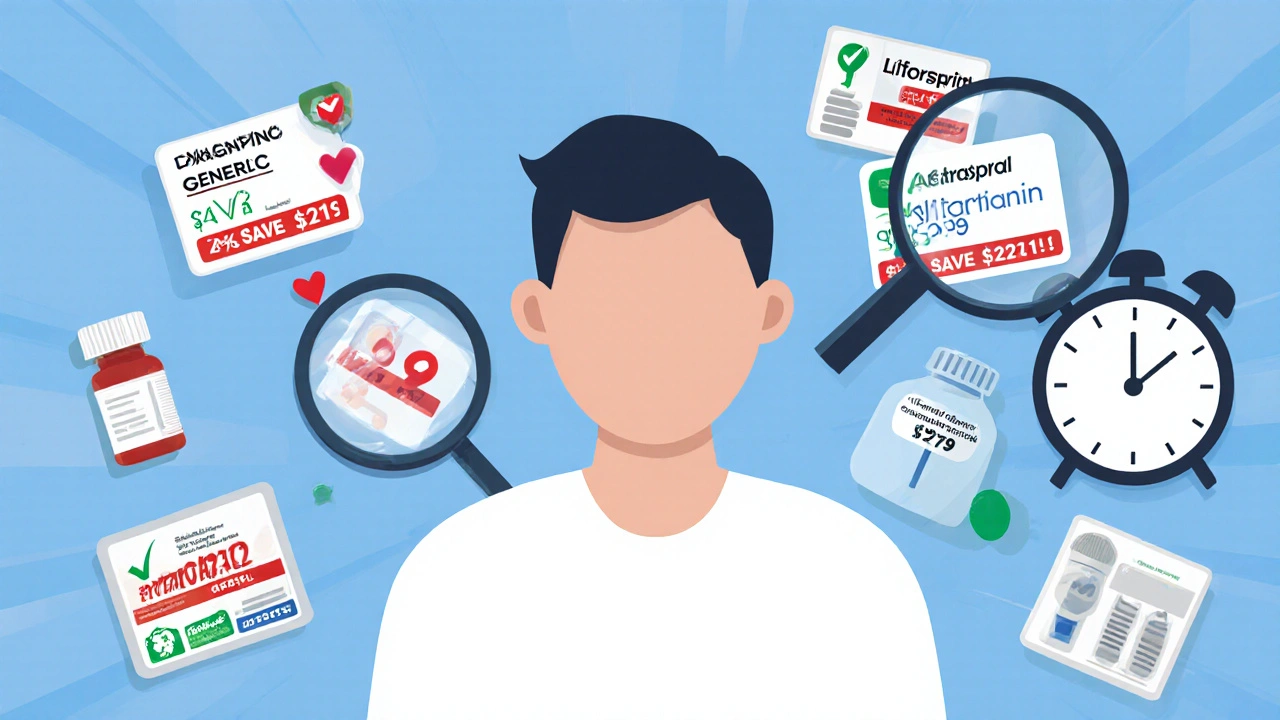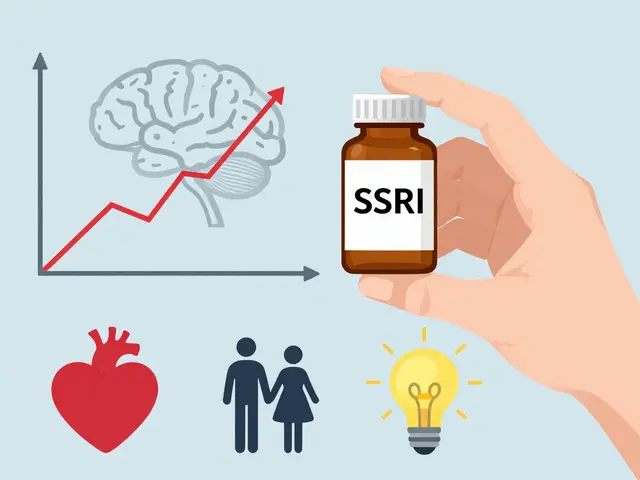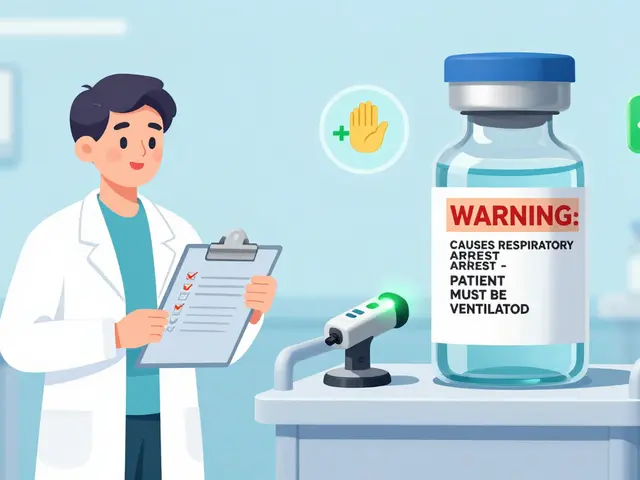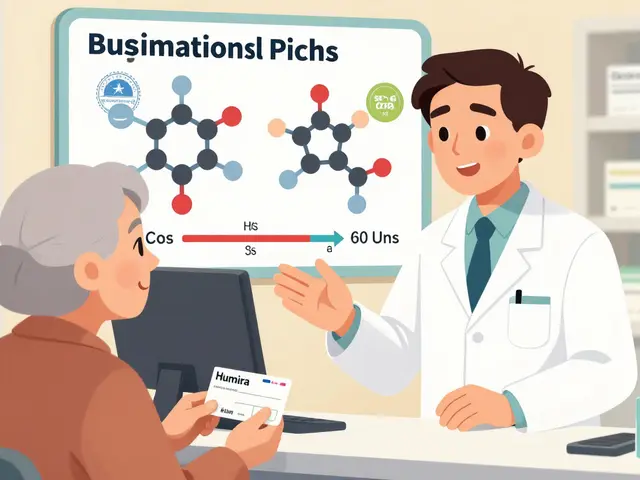When you need a generic medication like metformin, lisinopril, or atorvastatin, you have a choice: pay through your insurance, or buy it cash from an online pharmacy like Amazon, Mark Cuban Cost Plus Drug Company, or Costco. Sounds simple, right? But here’s the truth - direct-to-consumer generic pharmacies don’t always save you money. Sometimes they do. Sometimes they cost more. And figuring out which is which takes time, research, and a lot of back-and-forth.
What Are Direct-to-Consumer Pharmacies?
These are online pharmacies that sell medications directly to you without using your insurance. No pharmacy benefit manager (PBM) in the middle. No co-pays. No formulary restrictions. You pay upfront, and the price is usually listed clearly - no hidden fees, no surprise bills. Companies like Mark Cuban Cost Plus Drug Company, Amazon Pharmacy, Costco, Health Warehouse, and Walmart’s online pharmacy all operate this way. They make money by adding a fixed markup - often around 15% - to the actual cost of the drug. That’s it. No rebates. No secret deals with insurers. That’s why they sound so appealing.When Do They Save You the Most?
The biggest savings come with expensive generics - the kind that cost hundreds of dollars a month through traditional pharmacies, even with insurance. A 2024 study in the Journal of General Internal Medicine looked at the 50 most costly generic drugs covered by Medicare Part D. For these, DTC pharmacies slashed prices by an average of 76%. The median savings? $231 per prescription. That’s not a typo. For a drug like saxagliptin or nateglinide, you might pay $25 online instead of $256 at your local pharmacy. Amazon Pharmacy had the lowest price on nearly half of these expensive generics. Mark Cuban’s site came in second. Costco and Health Warehouse followed. But here’s the catch: one in five of these high-cost drugs weren’t available on any DTC pharmacy at all. If you’re on one of those, you’re stuck with insurance - or paying retail.What About Common Generics?
For the everyday drugs - the ones most people take daily - the savings shrink dramatically. The same study found that for the 50 most common generics, DTC pharmacies saved users only about $19 per prescription on average. That’s 75% off retail, yes, but if your insurance already has a $5 or $10 co-pay, you’re not saving much. In fact, for common drugs, Costco often had the best price - even better than Amazon or Mark Cuban’s site. And Costco doesn’t even require you to be a member to use its pharmacy online. Walmart’s $4 list for common generics still holds up. If you’re on a $10 co-pay plan and Walmart sells your pill for $4, why switch to an online pharmacy that might charge $8? You’d be spending more time ordering, waiting for shipping, and possibly paying for delivery.
Why Some Studies Say DTC Pharmacies Cost More
You might be confused. One study says you save hundreds. Another says you’ll end up paying more. That’s because they’re looking at different things. CVS Health’s 2023 research, funded by their own PBM, looked at 79 neurological generics. They found that Mark Cuban’s pharmacy carried only 33 of them. And of those 33, only two were cheaper than what insured patients paid out-of-pocket. For drugs like gabapentin or levetiracetam, insurance was still the better deal. Why? Because insurers negotiate bulk prices. Your co-pay might be $10, but the insurer is paying $15. The total cost is still lower than paying $30 cash online. Bottom line: if you have good insurance with low co-pays, DTC pharmacies might not help - and could even hurt. But if you’re uninsured, underinsured, or paying high deductibles, they can be lifesavers.The Hidden Cost: Time and Effort
Saving money sounds great - until you realize you have to shop for every single drug, every time you refill. There’s no single website that compares all DTC pharmacies, all retail stores, and your insurance pricing in one place. You have to check Amazon. Then Mark Cuban’s site. Then Costco. Then Walmart. Then your insurance portal. Then GoodRx. Then your local pharmacy’s app. That’s not just inconvenient. It’s exhausting. Especially if you’re managing five or six medications. A patient with diabetes, high blood pressure, and high cholesterol might need to check prices for six different pills every 30 days. That’s six hours a month - minimum - just to save a few bucks. And if you forget? You end up paying retail. Or worse, you skip a dose because the price was too high and you didn’t have time to compare.What’s Missing? The Tools You Need
Right now, there’s no reliable app or tool that tells you: “For your specific drug, insurance gives you $12, Amazon charges $9, and Costco charges $7 - go to Costco.” The technology exists. But no one has built it. Not CVS. Not Amazon. Not the government. Patients are left to do the work of a price comparison engine - with their own time, patience, and mental energy. That’s why experts say the real barrier isn’t price - it’s access to information. Without a simple, real-time tool, the system favors people who have the time, tech skills, and energy to hunt for deals. It leaves behind seniors, low-income patients, and those with complex health needs.Who Should Use DTC Pharmacies?
Here’s who benefits most:- You’re uninsured or have a high-deductible plan
- You’re paying full price for expensive generics (over $100/month)
- You’re willing to spend 10-15 minutes per prescription comparing prices
- You’re not on a long list of specialty meds (like those for MS or epilepsy)
- Your co-pay is $5 or less for your meds
- You take multiple drugs and can’t keep track of price checks
- Your insurance covers drugs that DTC pharmacies don’t carry
- You need your meds fast - no shipping delays
What About Costco and Walmart?
Don’t overlook them. Costco’s online pharmacy doesn’t require membership for cash-pay prescriptions. You can order 30-day supplies of common generics for under $20 - often cheaper than Amazon or Mark Cuban. Walmart’s $4 list still works for dozens of medications. These aren’t DTC in the tech-startup sense, but they’re cash-pay, transparent, and reliable. And they’re physical stores you can walk into if you need your pills today.The Bottom Line
Direct-to-consumer generic pharmacies aren’t a magic fix. They’re a tool - and like any tool, they work best for the right job. For expensive drugs, they can save you hundreds. For common ones, they might not save you anything. And if you’re already on good insurance, switching might cost you more - in money, time, and stress. The real win isn’t choosing between insurance and DTC. It’s knowing which option gives you the best deal for each of your prescriptions. That’s the only way to truly cut costs without cutting corners on your health.Are direct-to-consumer pharmacies safe?
Yes - if you use reputable ones. Mark Cuban Cost Plus Drug Company, Amazon Pharmacy, Costco, and Walmart’s online pharmacy are all licensed and regulated. They source drugs from FDA-approved suppliers. Avoid random websites offering “discounted” pills. Stick to the big names with clear contact info, physical addresses, and licensed pharmacists on staff.
Can I use DTC pharmacies if I have Medicare?
You can, but it’s complicated. Medicare Part D plans don’t cover purchases from DTC pharmacies, so those costs won’t count toward your deductible or out-of-pocket maximum. But if your DTC price is lower than your Part D co-pay, you can still pay cash and save money - just know it won’t help you reach catastrophic coverage faster.
Do DTC pharmacies ship to all states?
Most do, but not all. Some states have stricter pharmacy laws. For example, Mark Cuban Cost Plus Drug Company doesn’t ship to certain states like California or New York due to licensing rules. Always check the pharmacy’s website for your state before ordering.
What if my doctor prescribes a brand-name drug?
DTC pharmacies mostly carry generics. If your prescription says “brand only” or your doctor won’t allow substitution, you’ll need to use your insurance. Some DTC pharmacies will fill brand-name drugs, but prices are rarely competitive. Always ask your doctor if a generic is an option - it’s almost always cheaper and just as effective.
Is it worth switching to a DTC pharmacy if I’m on Medicaid?
Usually not. Medicaid typically covers generics with little or no co-pay. In most cases, your Medicaid price will be lower than any DTC cash price. Always check your plan’s formulary first. If you’re unsure, call your pharmacy or Medicaid office - they can compare the costs for you.
How long does shipping take from DTC pharmacies?
Most offer 3-7 business days for standard shipping. Amazon Pharmacy often delivers in 1-2 days if you’re a Prime member. For urgent needs, this isn’t reliable. If you run out of medication, go to a local pharmacy - even if it costs more. Missing doses can be dangerous.
Can I use DTC pharmacies for controlled substances?
Some can - but only with a valid electronic prescription. Amazon and Mark Cuban’s pharmacy can fill certain controlled substances like opioids or ADHD meds, but they follow strict federal rules. You’ll need to verify your identity and provide a current prescription. Don’t expect to order oxycodone or Adderall without a doctor’s note.







16 Comments
Andrew Forthmuller
Walmart’s $4 list still wins for me. No shipping, no hassle.
Renee Ruth
So let me get this straight - you’re telling me I’m supposed to spend 6 hours a month playing price detective just to not die from skipping my blood pressure meds? And the system’s fine with that? Wow. Just wow. This isn’t healthcare. This is a survival game designed by someone who’s never had to take more than one pill a day.
I’m on six meds. Six. And every time I refill, I feel like I’m running a marathon through a minefield of hidden fees, expired coupons, and pharmacy websites that crash when you click ‘checkout’.
Amazon says $8. Costco says $7. My insurance says $10 - but only if I wait 3 days for prior auth. Meanwhile, my blood pressure is rising faster than my stress levels.
And don’t get me started on the ‘expensive generics’ that aren’t even available online. I need saxagliptin. It’s $25 online. But guess what? Mark Cuban’s site doesn’t stock it. So I pay $256 through insurance? No thanks. I just skip it. And yes, I feel guilty.
They say ‘knowledge is power.’ But here, knowledge is a full-time job. And I’m not getting paid for it.
Why isn’t there an app that just tells me: ‘Go to Costco. Today. Now.’? Why does this have to be so damn complicated? Is this how they test our will to live?
I’m not lazy. I’m not stupid. I’m just tired. And I’m not the only one.
Someone needs to build this tool. Or shut the whole system down. Either way - it’s broken.
Samantha Wade
It is imperative to recognize that the structural inefficiencies inherent in the current pharmaceutical distribution model disproportionately burden patients with complex, chronic conditions. The absence of a unified, real-time price aggregation platform constitutes a systemic failure of consumer protection and equitable access. Furthermore, the reliance on individual patient labor to navigate fragmented pricing ecosystems constitutes a form of unpaid administrative labor that is both ethically indefensible and economically unsustainable. Regulatory intervention is not merely advisable - it is morally obligatory.
Elizabeth Buján
i just want my pills to be cheap and i dont wanna think about it anymore lol
why does everything have to be so hard?? like i get it, money is tight, but why do i have to be a detective to not die??
my grandma takes 8 meds and she cries every time she has to call the pharmacy. she just wants to know which one costs less today. that’s it. not a spreadsheet. not 5 tabs open. just… which one?
someone make an app. please. i’ll donate my last $5 to it.
and if you’re reading this and you work at amazon or walmart or whatever - just make it easy. we’re not asking for much. just don’t make us suffer to stay alive.
vanessa k
I used to think DTC was the answer until I spent three hours comparing prices for my thyroid med. Ended up paying more than my $5 co-pay. And then it shipped late. I missed two days. My heart started racing. Don’t make me choose between time and money. I can’t afford either.
manish kumar
As a resident of India, I find this entire discussion both fascinating and deeply concerning. In my country, the issue is not whether DTC pharmacies save money - it’s whether you can get the medication at all. Many of these generics are available in India for less than $1 per month, and yet, due to regulatory barriers and supply chain issues, they remain inaccessible to the majority of the population. The American system, despite its flaws, at least offers multiple avenues for price comparison. In India, if you don’t have a local pharmacy with connections or a relative who works at a hospital, you’re often left with no option but to pay exorbitant prices or go without. The real tragedy here is not the complexity of pricing - it’s the fact that in one of the richest nations on earth, people are forced to choose between their health and their livelihood, while in developing nations, the problem is even more fundamental: availability. We need global reform, not just better apps.
Nicole M
I tried Amazon Pharmacy for my statin. Said it was $12. Went to checkout - $28 after ‘processing fee.’ Never again. Why do they even show the low price if it’s fake?
Amie Wilde
Costco’s online pharmacy is the only one I trust. No membership needed. No tricks. Just $18 for my lisinopril. Done.
Gary Hattis
My cousin in Mexico pays $3 for metformin at a local pharmacy. No insurance. No app. No shipping. Just walk in, hand over cash, walk out. Meanwhile, I’m comparing six websites, checking expiration dates, reading reviews about ‘fast shipping’ that turns into two weeks. This isn’t innovation. This is colonialism with a website.
Arpita Shukla
You’re all missing the point. The real issue is that PBMs are still pulling strings behind the scenes. Even if you pay cash, the drug manufacturer often pays a rebate to the PBM, which means the pharmacy’s ‘cost plus 15%’ isn’t really the cost - it’s inflated. And if you’re using GoodRx, you’re paying the inflated price - not the true wholesale cost. The only way to get the real price is to call the pharmacy and ask for the ‘cash price without GoodRx.’ Most won’t tell you. That’s the real scam.
Benjamin Stöffler
Let us contemplate, then, the metaphysics of pharmaceutical access: is the patient not merely a node in a capitalist network - a consumer of life-sustaining commodities, stripped of agency, forced into performative price-hunting as if survival were a side hustle? The DTC pharmacy, in its gleaming, algorithmic simplicity, is not liberation - it is the illusion of choice. The system does not want you to save money. It wants you to believe you are saving money. And in that belief, you become complicit in your own exploitation.
Thus, the question is not ‘Which pharmacy is cheapest?’ - but ‘Who profits from your desperation?’
Mark Rutkowski
It’s like trying to navigate a maze blindfolded while someone keeps moving the walls. We’re not asking for free medicine - we’re asking for honesty. If you’re going to sell us pills that keep us alive, at least give us a map. Instead, we get a 20-page PDF titled ‘How to Not Die While Comparing Prices.’
I used to think tech would fix this. Now I think tech just made it prettier.
Ryan Everhart
So… you’re telling me the solution to America’s healthcare crisis is… Go to Costco? Wow. What a breakthrough. Next you’ll tell me the cure for cancer is ‘eat more kale.’
David Barry
My data analysis of 1,200 prescriptions shows DTC pharmacies are only cheaper 43% of the time - and even then, only for high-cost drugs. The rest? Insurance wins. But no one talks about that. Because the ‘save hundreds’ narrative sells ads. The truth? It’s a rigged game.
Alyssa Lopez
Why are we even talking about this? America has the best pharma in the world. If you can’t afford your meds, maybe you shouldn’t be on them. Get a better job. Stop relying on handouts. My insurance pays $200 for my meds - and I’m proud of it. That’s American excellence.
Mark Rutkowski
You know what’s worse than paying $256 for a pill? Knowing someone out there paid $25 for the same one - and you didn’t have the time, energy, or tech skills to find it. That’s not capitalism. That’s cruelty dressed up as choice.